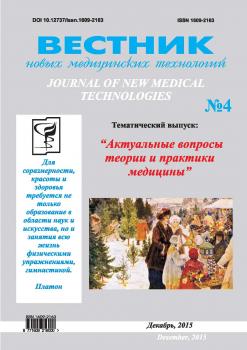The purpose of the research is to study the role of AMPA receptors of glutamate in the mechanisms of the development of epi-lepsy in the patients with gliomas of the big hemispheres of a brain. Materials and methods: 92 patients with gliomas of the big hemispheres of a brain have been examined. Immune enzyme method of semi-quantitative determination of the level of auto-antibodies to NR2A subunit of NMDA and GluR1 subunit of AMPA receptors of glutamate was used. Results: The frequency and clinical features of symptomatic epilepsy have been studied. The reaction of NMDA and of AMPA receptors of glutamate depending on localization and degree of malignance and features of clinical course of the disease, have been examined. Conclusion: A high-technology of patho-morphological research of brain tumors made in recent years has revealed that glial tumors start releasing glutamate by themselves, as their anaplasia level increases, which causes exitotoxical effect in anatomical lines of peritumoral area. Such blastomastoma growth features form specificity of clinical aspect of disease, including epileptic syndrome. It is shown dominative increase the level of auto-antibodies to GluR1 subunit of AMPA receptors of glutamate in the patients with gliomas, current with epileptic syndrome. Under the effect of the tumor on the frontal and temporal share the maximum level of autoantibodies, mainly to GluR1 subunit of AMPA receptors of glutamate is registered.
glioma, epileptic syndrome, AMPA glutamate receptors.
1. Granstrem O.K., Dambinova S.A. Rol´ glutamatnykh retseptorov v mekhanizmakh formirovaniya epilepsii. Neyrokhimiya. 2001. T. 18. № 1. S. 19-29.
2. Dambinova S.A. Neyroretseptory glutamata. L.: Nauka, 1989. 279 s.
3. Likhterman L.B. Klinicheskaya diagnostika opukholey bol´shikh polushariy golovnogo mozga. M.: Meditsina, 1976. 187 s.
4. Dambinova S.A. Pat. 2112243 Rossiyskaya Federatsiya, MPK6G01N33/53, C12Q1/04, A61K39/00. Nabor “PA-test” dlya diagnostiki nevrologicheskikh zabolevaniy. № 95120299/13; zayavl. 29.11.1995; opubl. 27.05.1998, Byul. № 6.
5. Basic neurochemistry: molecular, cellular and medical aspects. Eds. by Siegel G.J. et al. 5th ed. N. Y.: Raven press, 1994. P. 867-884.
6. Carson B., Brem H. Neurological Surgery. JAMA. 1990. Vol. 263. N 19. P. 2658-3659.
7. WHO Classiffication of Tumors of the Central Nervous System (2007). Louis D.N., Ohgaki H., Wistler O.D. [et al.]. Geneva: WHO Press, 2007.
8. National survey of patterns of care for brain-tumor patients / Mahaley M.S. Mettlin C., Natarajan N. [et al.]. Journal of Neurosurgery. 1989. Vol. 71 (6). P. 826-836.
9. Matsumoto H., Ajmone-Marsan C. Cortical cellular phenomena in experimental epilepsy: interictal manifestations. Experimental Neurology. 1964. № 9. P. 286-304.
10. Olney J.W. New mechanisms of excitatory transmitter neurotoxicity. Journal Neural Transmission. Supplementa-Springer. 1994. Vol. 43. P. 47-51.
11. Said S.I. Glutamate receptors and asthmatic airway disease. Trends in Pharmacological Science. 1999. Vol. 20. N 4. P. 132-135.
12. Sontheimer H. Glutamate and tumor-associated epi-lepsy. Oncotarget. 2011. № 2. P. 823-824.
13. Glutamate release promotes growth of malignant gli-omas / Takano T., Lin J.H., Arcuino G. [et al.]. Nature Medicine. 2001. № 7(9). P.1010-1015.





